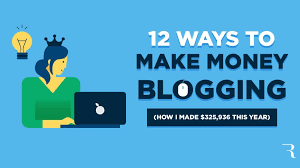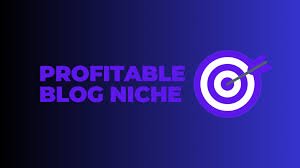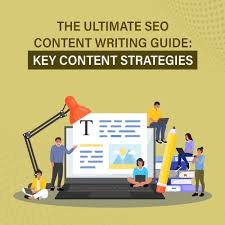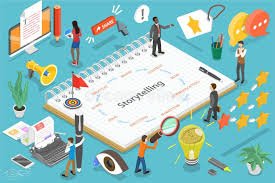The digital landscape is shifting rapidly as we enter 2025, opening up a wealth of new earning opportunities for individuals, businesses, and creators alike. With new technologies, platforms, and innovative business models emerging, it’s essential to stay ahead of the curve to maximize your earnings. Whether you are looking to build a side hustle or scale your business, understanding the most profitable trends and strategies will help you unlock financial success in the coming year. Below, we explore the best monetization opportunities that are set to dominate in 2025. 1. AI-Powered Monetization: The Future of Earning In 2025, artificial intelligence (AI) is revolutionizing how people make money online. From AI-driven marketing tools to automated content creation, AI is enabling entrepreneurs and creators to scale their businesses faster and more efficiently than ever before. One of the most promising ways to leverage AI for profit is through chatbots and virtual assistants that automate customer service, leading to reduced overhead costs and enhanced user experience. Moreover, AI tools can be used to enhance affiliate marketing efforts, predict consumer behavior, and generate personalized content for websites or social media. If you are in the e-commerce space, integrating AI into your business can help you optimize product recommendations, improve customer engagement, and boost conversions — all of which ultimately lead to higher earnings. 2. Influencer Marketing and Brand Partnerships Influencer marketing is no longer just a trend — it’s a thriving industry. With social media being a primary form of communication and entertainment for millions of people, influencers have the power to drive sales and impact consumer behavior on a massive scale. As we move into 2025, influencer marketing is evolving, and it’s more accessible than ever for both large and small brands to partner with content creators. For individuals looking to capitalize on this trend, becoming an influencer in your niche can unlock significant earning potential. You can partner with brands for sponsored content, product placements, and affiliate marketing opportunities. Platforms like Instagram, YouTube, TikTok, and Twitch are still dominating the space, and new apps or networks might emerge, giving influencers even more opportunities to profit. The key is to build a strong, engaged community and leverage that influence to create valuable partnerships. 3. Subscription-Based Models and Recurring Revenue The subscription economy is expected to continue flourishing throughout 2025. From subscription boxes to digital memberships, people are more inclined than ever to pay for regular access to exclusive content, products, or services. This model offers the advantage of predictable, recurring income, which is especially appealing for creators, content producers, and service providers. Substack, Patreon, and OnlyFans are well-known platforms for creators to monetize their content through subscriptions, but the trend is expanding to other niches. Whether you offer exclusive articles, videos, tutorials, or behind-the-scenes content, creating a subscription-based service can help build a steady and loyal customer base. In addition to content creators, businesses can tap into this trend by offering premium memberships, exclusive products, or even access to specialized services. This creates a predictable revenue stream and enhances customer retention, which is essential in a highly competitive digital world. 4. E-Commerce and Niche Products E-commerce continues to grow at an exponential rate, and in 2025, niche markets and specialized products are proving to be a winning formula for entrepreneurs. Platforms like Shopify, Etsy, and Amazon are perfect for starting an online store, but finding a niche that resonates with consumers is key to standing out in a crowded marketplace. Dropshipping remains a popular option for e-commerce businesses due to its low upfront cost and minimal inventory requirements. However, as e-commerce platforms become more competitive, businesses that focus on unique, high-quality products are seeing greater success. Personalization is a significant trend, and consumers are seeking unique, customized items they can’t find in mass-market stores. As we move into 2025, focusing on niche e-commerce opportunities and delivering a unique value proposition will be critical for success. 5. Monetizing Digital Products: E-books, Courses, and Templates In 2025, digital products like e-books, online courses, and digital templates are going to continue to be powerful tools for earning income. The demand for online education and self-improvement content has surged, and people are willing to pay for knowledge and expertise. If you have a particular skill or expertise, creating and selling digital products can provide a consistent and scalable income stream. Platforms such as Teachable, Udemy, and Skillshare have made it easier than ever to create and sell online courses. Whether you’re teaching how to code, offering business advice, or guiding people through fitness routines, the opportunities to monetize your knowledge are endless. Additionally, creating digital products like e-books, printables, and design templates is a low-cost way to generate income without the need for inventory or shipping. 6. Investing in Cryptocurrency and Blockchain Technology Cryptocurrency is evolving rapidly, and 2025 is poised to bring even more opportunities for earning through blockchain-based projects, NFTs (Non-Fungible Tokens), and digital currencies. Bitcoin, Ethereum, and other major cryptocurrencies continue to attract investors, but the rise of decentralized finance (DeFi) is opening up new avenues for earning passive income. NFTs, once reserved for art and collectibles, are now being used for everything from music and gaming to virtual real estate. If you’re a creator or entrepreneur, NFTs can be a powerful way to monetize digital art, music, videos, and even physical products. By 2025, we can expect more mainstream adoption of NFTs and blockchain technology, making it easier for creators to profit from their digital creations. Additionally, staking and yield farming are gaining popularity as ways to earn passive income through cryptocurrency investments. By participating in DeFi platforms, you can earn rewards by locking up your digital assets or providing liquidity to blockchain networks. 7. Remote Work and Freelancing Platforms Remote work and freelancing continue to thrive, and in 2025, these income streams will remain a primary avenue for earning online. With businesses increasingly shifting to remote teams, there is a growing demand for freelance workers in areas like writing, design, programming,




















